Google Ad Not Getting Impressions
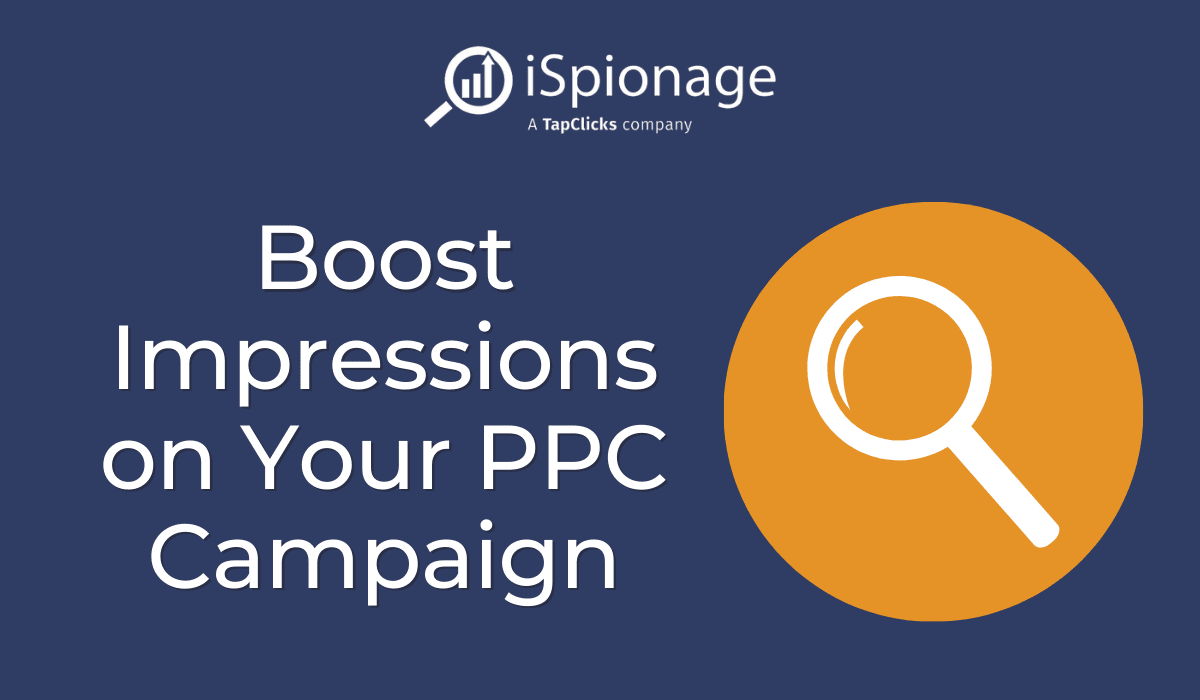
There are few things more frustrating in the PPC world than spending hours or even days building out a new Google Ads campaign, only to get no (or very few) impressions on your ads. While Google ads with no impressions can feel discouraging, they don't always signal a problem — and when they do, a simple fix often boosts impressions and sends campaigns off to the races.
But first, you have to figure out:
- If you really have a problem
- What that problem is
- How to fix the problem and get more impressions

Below, we explore each of these topics, with expert advice from Travis Godbout of Propellant CG — a top web marketing consultancy. Read on to see why your PPC search ads might not be getting impressions, and learn 3 strategies for how to remedy that.
Sign up for a free iSpionage account to see what competitors are doing to run profitable PPC campaigns. Subscribe to our paid plan to access SEM Campaign Watch, where you can see the impression share across your industry and monitor competitor A/B tests.
Why Aren't My Google Ads Getting Impressions?
The first step in fixing your Google ads with no impressions is to find the root of the problem — so you can identify how best to combat it.
Figuring Out If You Have a Problem
Before you look into all of the potential problems that may be causing low impressions on your Google ads, it's important to take a step back and decide whether or not low impressions are actually indicative of a problem in the first place. This is because those low impressions aren't always automatically a problem.
In fact, low (and even no) impressions are actually the norm for some Google ads that traffic in certain industries and niche target audiences. They don't necessarily indicate a problem on your end — but rather a low search volume for those particular keywords you're targeting in.
"If you have an ad group that's made up entirely of the ultra-low volume search terms, you might go a month or two without getting impressions," Travis explained.
As an example, he added, "I have a client right now and we use a lot of matching on first name, last name, and variants. We have ad groups that go three or four months without much in the way of impressions. All of a sudden, we get five or six and then get a conversion."
There are a couple of ways to figure out whether or not your low Google Ads (formerly Google AdWords) impressions are normal:
- Check (or double-check) the average monthly search volume for the keywords you're targeting
- Look at your impression share for a campaign and see how it compares with your ad competitors
If you don't already have information on the estimated volume for the search queries in your ad group, you can use the keyword research tools in iSpionage. Simply go to Competitor Research > Keyword & Domain Research and then search for your keywords. The tool will pull in the estimated monthly search volume at the top of the results.
(Keep in mind: all of the images in this post are clickable so that you can get a better look at everything.)
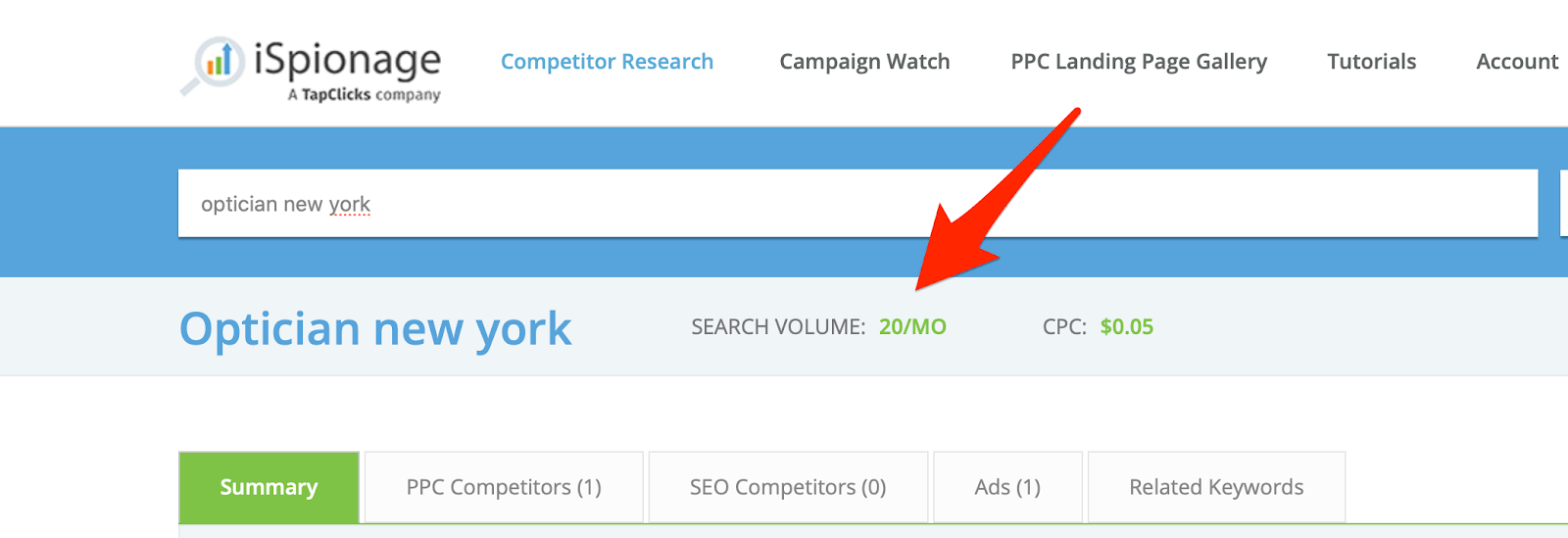
You can also find information on the impression share landscape using iSpionage using the SEM Campaign Watch tool, which is available to users on a paid subscription (with a 30-day money-back guarantee). You can add keywords to the tool to see which competitors are bidding on them, with a breakdown of impression share.
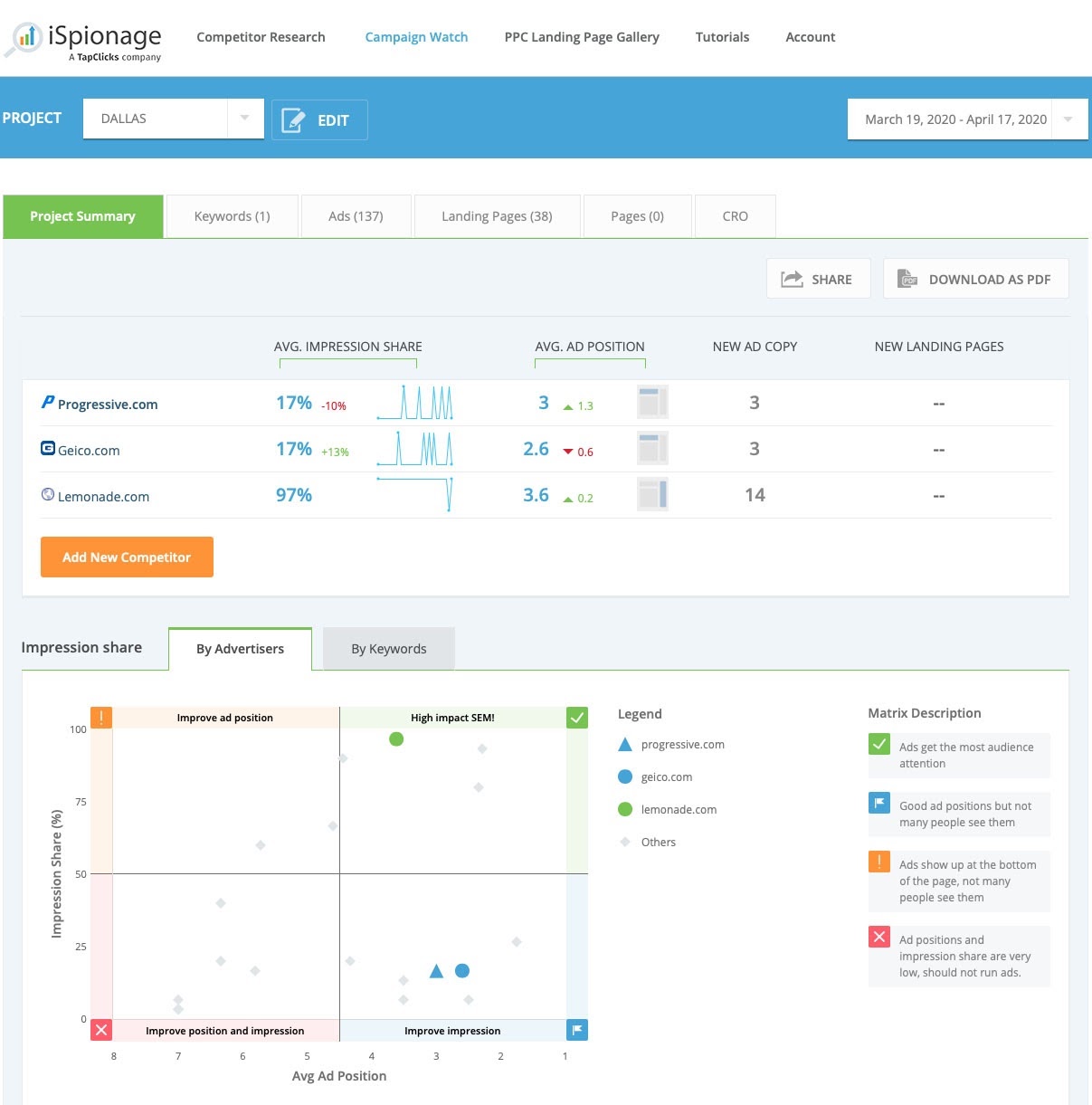
That breakdown can help in contextualizing your low impressions. If you're only seeing a handful of impressions per month, but you're commanding 50% of the impression share, for example, it's safe to assume the number of impressions are a reality of that keyword or niche — not indicative of a particular problem with your Google Ads campaigns.
Sign up for a free iSpionage account to see what competitors are doing to run profitable PPC campaigns. Subscribe to our paid plan to access SEM Campaign Watch, where you can see the impression share across your industry and monitor competitor A/B tests.
Identifying the Problem
Once you've determined there's definitely something going on with your Google Ads that's causing them to have no impressions, it's time to identify what the problem is.
"A lot of times it's what I would call a structural or mechanical issue," Travis said. "It could be something as silly as an oversight where your billing isn't set up correctly. You might have a credit card that's expired or you run out of campaign budget without much warning."
As a simple fix, Travis recommends to double-check all of your billing details and budgeting to ensure everything in your Google Ads account is set up correctly and able to bill.
Once you've verified the back-end, Travis said, "You can go in the opposite direction and look at factors that are much more hidden, but can still cause low or no impressions," like an audience bid modifier that's out of whack or overly restrictive, using broad match negative keywords.
With negative keywords, you're telling Google Ads which search queries you don't want to serve ads for. But when you use broad match negative keywords (meaning you eliminate other variations of the term and some related searches, too) you can quickly end up losing a big chunk of potential impressions.
According to Travis, those issues can end up "preventing a core audience of yours from getting any impressions."
Issues like these can happen for myriad reasons. "Maybe you copied that campaign structure over to a new campaign and the audience came with it — which you weren't thinking about because it was buried in the audience tab — and now it's not getting impressions."
When you look into campaign structure issues like these, you can quickly identify and remedy red flags in your PPC campaigns — and get impressions moving in the right direction.
How to Get More Impressions for Your Google Ads
In some cases, Google Ads with no impressions aren't the result of a specific issue you can point to in your campaigns or individual ads. If you weren't able to identify a definite problem with your campaigns (or if you did and fixing it didn't solve your low impressions) then the next step is to look at broader actions you can take to get more impressions for your Google Ads.
Travis detailed 3 strategies PPC advertisers can use to boost impressions, and we share them below.
1. Re-Examine Your Keyword Research and Targeting
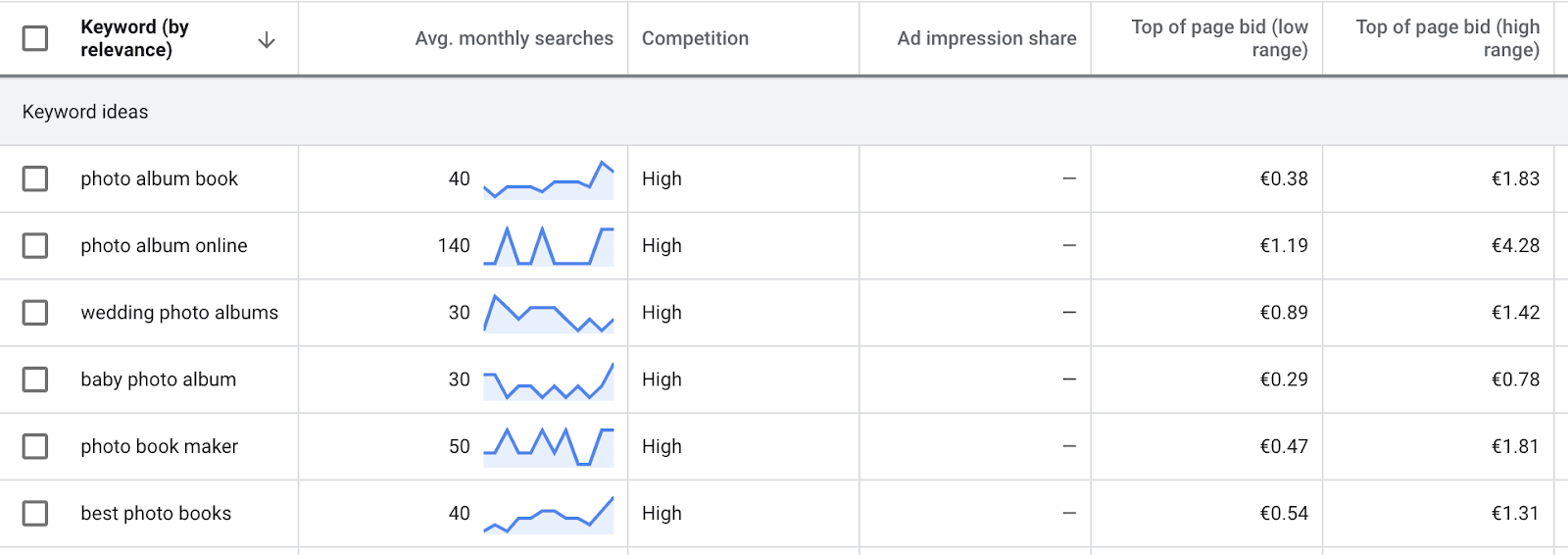
"You can't create search demand when it isn't out there," Travis said. In other words, you can't manufacture search volume — so you need to target keywords that have at least some existing search demand. If your Google Ads are seeing no impressions, it might be time to re-examine and rethink the keywords you're targeting.
He shared an example of one client he worked with that sold online photo albums:
They wanted to position their product as a "photo book." But people weren't searching for a photo book, people were searching for a photo album. And it was a 10 or 15 to one ratio of people looking for "photo album" versus "photo book". There wasn't demand out there for "photo book" because they were effectively creating that term for themselves as a brand differentiator .
Targeting low volume keywords is, perhaps, one of the most foundational reasons for Google Ads with no impressions. As we mentioned earlier, some industries and niche markets just have low impressions — B2B industries, for example, or very niche consumer products.
But that doesn't mean you can't boost your Google Ads impressions.
While Travis acknowledged that broadening your target keywords can lead to a negative impact with other key PPC metrics (like a drop in clickthrough rate (CTR) or an increase in cost per acquisition (CPA)), he still recommends including related keywords in your Google Ads keyword strategy.
"Find related Google searches that are in the same vein as what you offer and employ tactics to filter for those which are most likely to convert," he said.
It's important to view related keywords strategically — don't just target high-volume keywords that your audience isn't searching for. The trick is to look for related search terms that have higher search volume and add them to your Google Ads targeting where they make sense.
"You have to find the balance," Travis explained, "between getting as many of those impressions as possible — with somewhat aggressive ad copy that's a little bit more vague and generic than normally — and being able to convert those people efficiently enough once you get them to the site."
2. Improve Your Quality Score
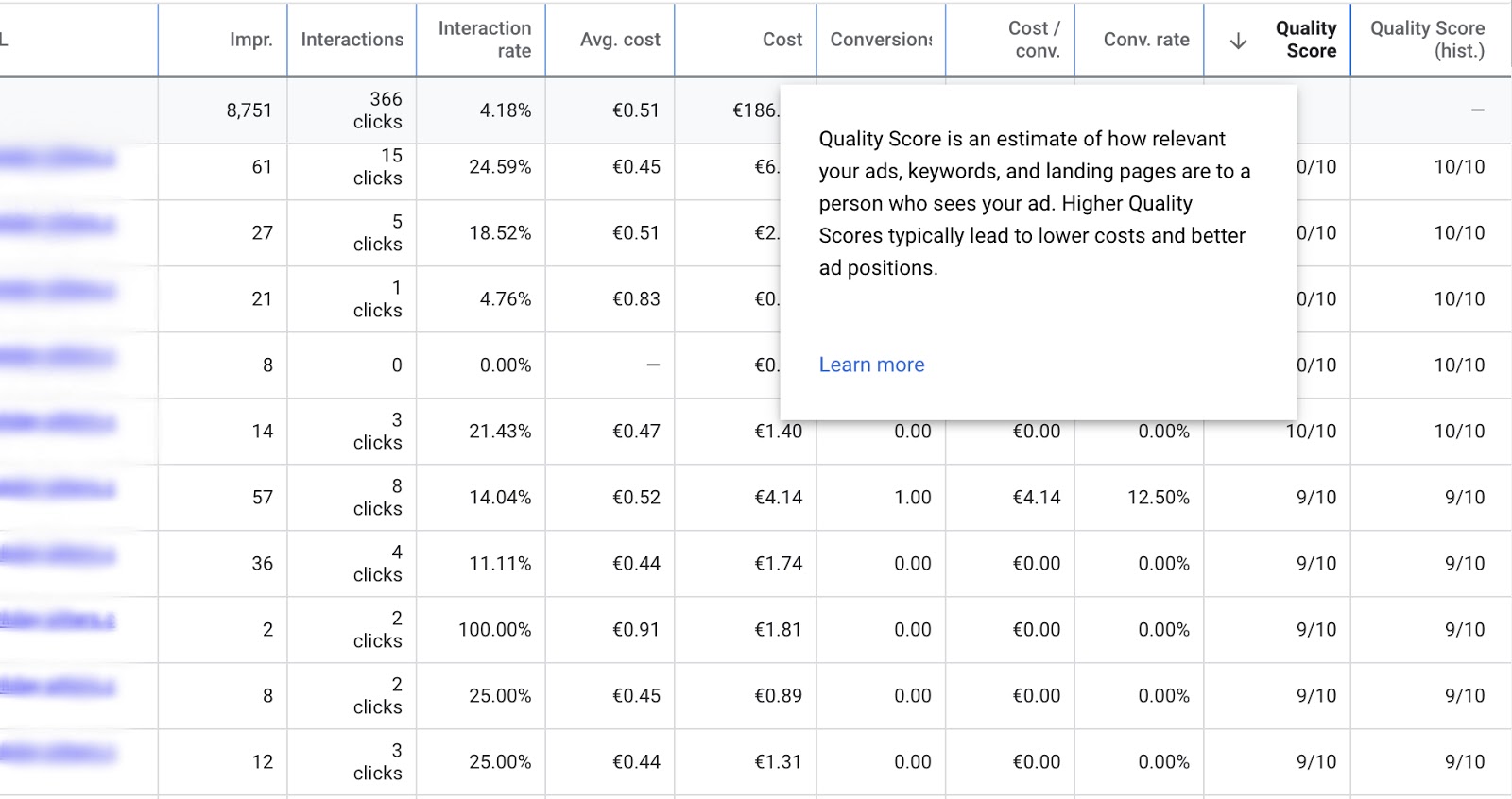
Regardless of the keywords, you're targeting and the search volume they command, one of the surest ways to improve just about every PPC metric (including impressions) is to improve your quality score. Nearly every conversation around improving paid search KPIs comes back to quality score, and that's for good reason.
"All else being equal — if you have the same keyword bids, same click-through rate — Google has to decide between giving an impression to you or me. If you have a low quality score, I'm going to get that impression over you," Travis noted.
In other words, when your quality score improves, you can:
- Beat out competitors for impressions, when all other factors are equal
- Score better ad positioning, even when other metrics (like CTR) aren't better than your competitors
- Get more impressions for a lower CPC
As Travis explained, Google's quality score is based on more than 100 different attributes — but the primary factor is the click-through rate. So boosting your CTR is one of the most effective ways you can improve your quality score and win more impressions.
The way to improve CTR is to write compelling ad copy that encourages more clicks. If you're also targeting related, high-volume keywords as recommended above, you'll need to balance the specificity and relevance of your ad copy to drive more clicks across all target keywords.
Note: With the iSpionage User Journey report, you can learn how competitors group their keywords — and see their ad copy, and also dig into what they're doing on their landing pages:
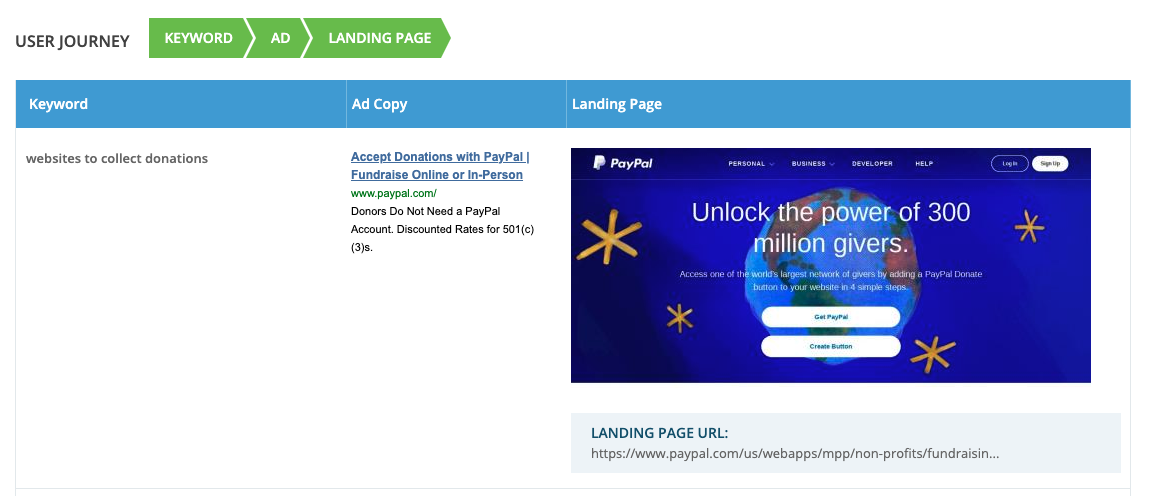 Ad > Landing Page" width="1151″ height="496″>
Ad > Landing Page" width="1151″ height="496″>The other thing Travis said to keep in mind is CPC and conversion rates — particularly if you're running Google Ads for B2B audiences where clicks tend to come at a higher cost. If you're looking for more advice on this topic, you can see our guide on lowering your Google Ads CPC.
Give Your Quality Score a Leg Up with Automated Bidding
Another strategy Travis suggests can help improve your quality score is to use Google's automated bidding strategies — specifically the Target CPA goal. By handing some control back to Google (letting them determine exact bids), you'll often enjoy a higher overall quality score.
But, Travis cautioned, you have to set up automated bidding rather deliberately and strategically. Specifically, he recommends using a portfolio bid strategy with a conservative maximum CPC limit and informed daily budget to ensure Google doesn't use sky-high CPCs in the name of conversions (or, more cynically, to pad their bottom line).
3. Analyze Competitor PPC Campaigns to Understand Performance
The last bit of advice Travis shared centered around taking insights from your competitors' PPC and Google Ad campaigns. Specifically, he recommends looking at competitors:
- Target keywords
- Ad copy
- Landing pages
"If I've exhausted everything with my keyword research, I go and research three or four direct competitors. If I notice that all three of them are using a term that I'm missing, I try experimenting with that term," Travis said.
That's the idea behind analyzing competitor PPC campaigns — to identify how competitors are maximizing impressions, including by targeting additional keywords and boosting CTR.
"What am I missing here?" Travis suggests asking. "Is there a particular phrase that seems to be resonating that my competitors are using? That's generating a better click-through rate on that limited set of impressions?"
You can find information about your competitors' PPC campaigns using iSpionage's Competitor Research tool, which is available on our free plan.
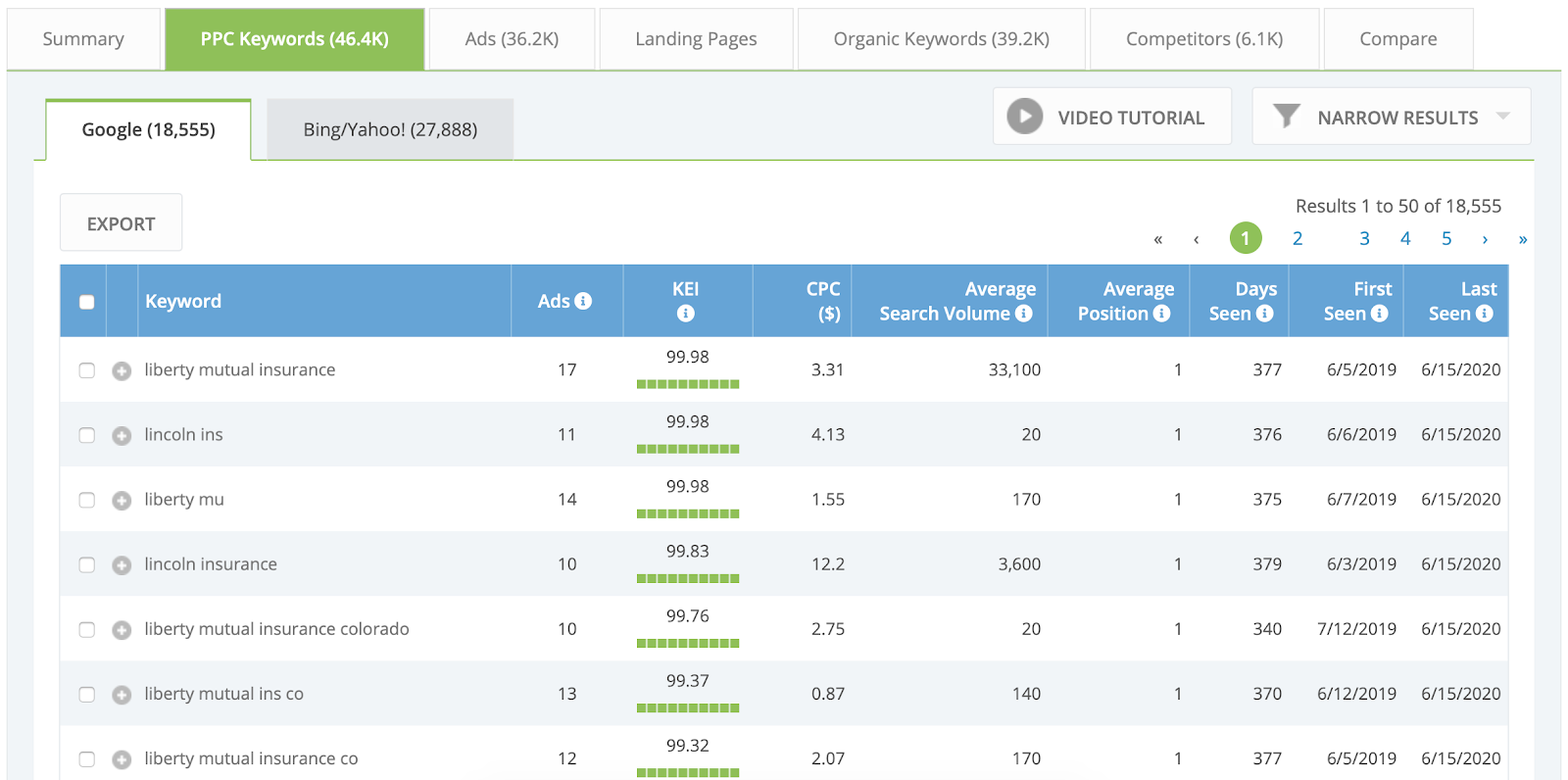
As we mentioned earlier in this article, with iSpionage, you can search individual competitors to see which keywords they're bidding on — plus the ad copy and landing pages associated with each keyword campaign.
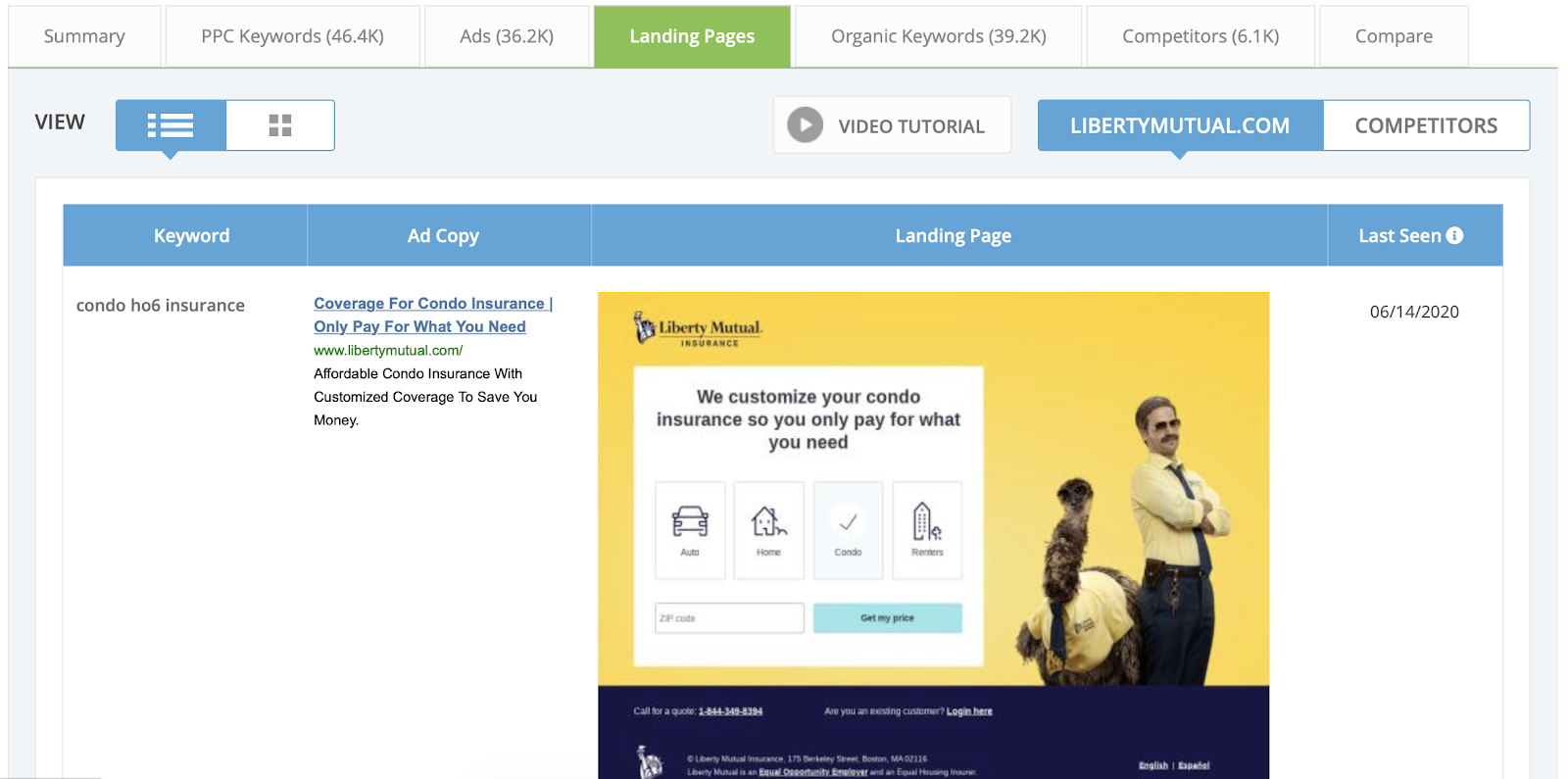
You can also search specific keywords to get a broader view of which brands are advertising there, along with the ad copy and landing pages they're using.

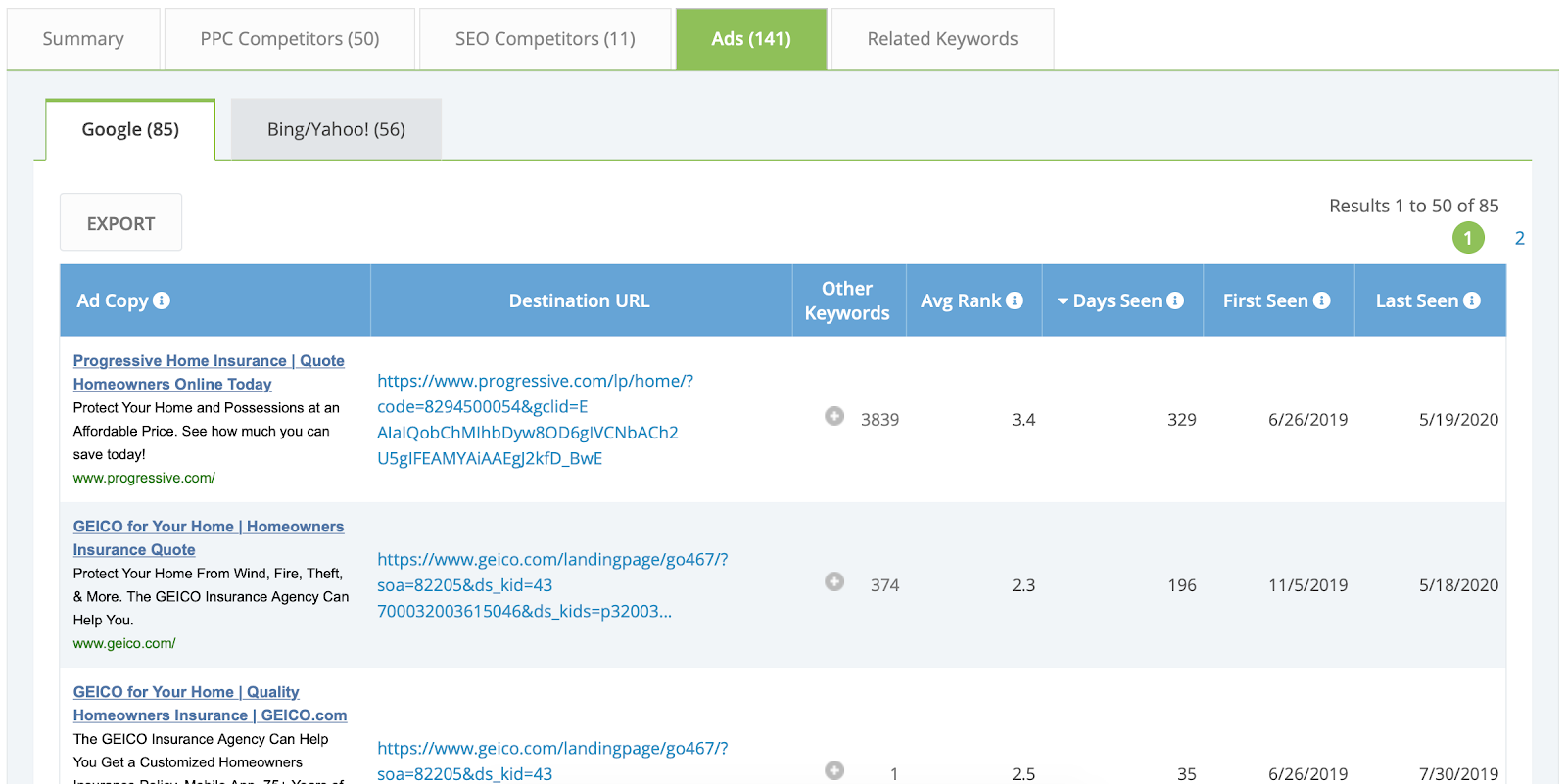
This competitor data can be used to optimize your own PPC campaigns, because you can learn which keywords are being targeted, and exactly how competitors are targeting them.
And with iSpionage SEM Campaign Watch, you can dig into specific competitors (the ones with the highest impression share) to learn about their A/B tests and PPC campaign tweaks over time. This monitoring can uncover new ways to improve your own impression share.
Turn Google Ads with No Impressions into High-Performing PPC Campaigns
Google Ads with no impressions don't always signal a larger issue. But if you're still looking to improve your share of impressions in your niche, you can try a few tactics, including:
- Re-examining keyword research and broadening your targeting
- Continuing to improve your Google Ads Quality Score
- Learning from competitors who are performing consistently well
As well as identifying red flags and fixing campaign structural issues, you can optimize your campaigns to achieve higher impressions by focusing on these three areas.
Sign up for a free iSpionage account to see what competitors are doing to run profitable PPC campaigns. Subscribe to our paid plan to access SEM Campaign Watch, where you can see the impression share across your industry and monitor competitor A/B tests.
Google Ad Not Getting Impressions
Source: https://blog.ispionage.com/google-ads-no-impressions.html
Posted by: ryanyesposiond.blogspot.com

0 Response to "Google Ad Not Getting Impressions"
Post a Comment